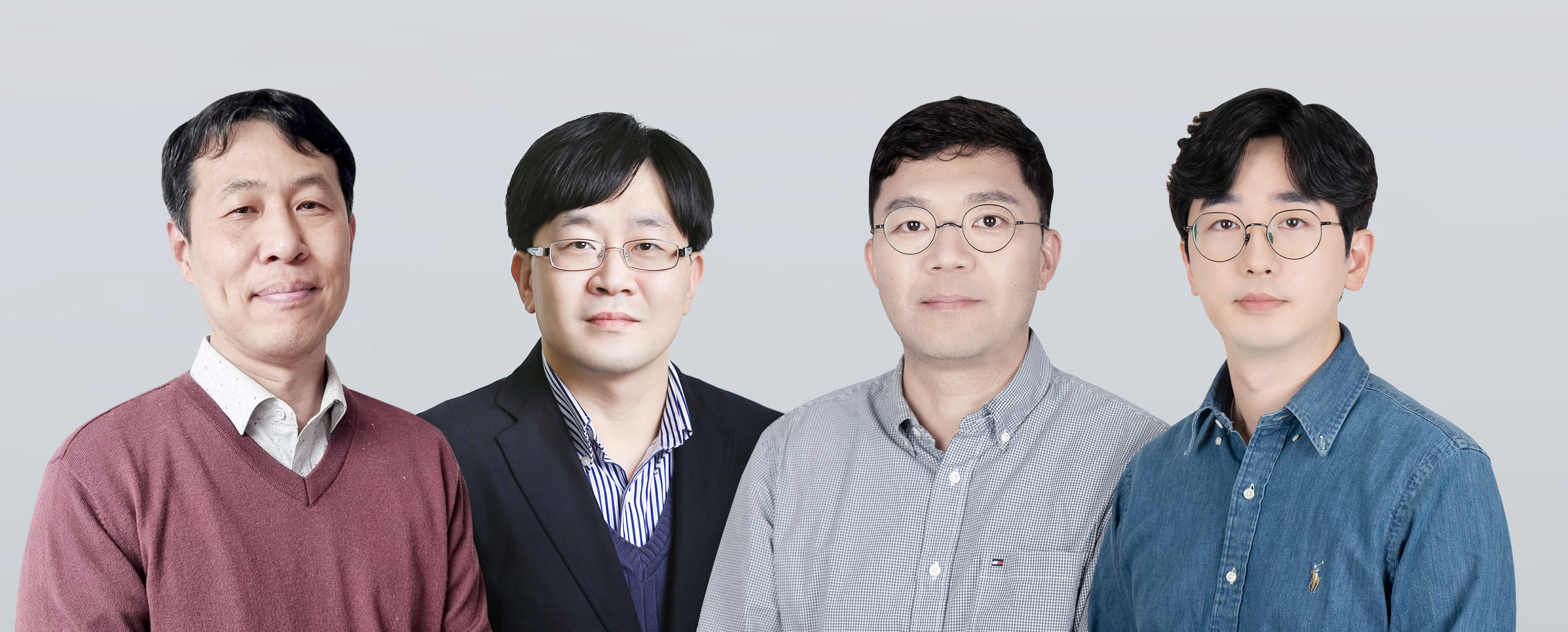Samsung Introduces Easily Regenerable Air Purification Filter Technology Applying Photocatalysts
Korea on February 16, 2023
Newly developed filter simultaneously removes particulate matter and volatile organic chemicals as primary air pollutants while retaining initial performance for up to 20 years
Samsung Electronics today introduced a new air filter technology that simultaneously collects particulate matter (PM) and decomposes Volatile Organic Compounds (VOCs) and can be used for 20 years through simple water washing. A study about the technology was published in the journal Nature Communications on 15th February UK Time.

▲ (left to right) SAIT Researchers Dong Sik Yang, Hyun Chul Lee, Hyuk Jae Kwon and Min Seok Koo
“This project started from listening to suggestions from manufacturers and users of air purification filters,” said Hyuk Jae Kwon, one of the lead-/corresponding authors at Samsung Advanced Institute of Technology (SAIT). “We plan to expand the research into accelerating the commercialization of long-lifetime filters in the future.”

▲ Filter Structure
Conventional air purification filters need frequent replacement because of their short cycle of six months to one year. In addition, every single filter can only remove either PM or VOCs, respectively, limiting air purifiers’ space efficiency.
To address these problems, researchers at SAIT developed and implemented an unprecedented filter technology that applies photocatalysts such as copper oxide (Cu2O) and titanium dioxide (TiO2) for the first time and verifies the viability for commercialization.
Samsung’s ceramic catalyst filter technology is expected to help implement compact air purification systems, significantly reducing both disposable waste and the cost burden caused by frequent filter replacement.
The filter is designed to capture PMs first in the porous ceramic wall at the inlet channel, where the inorganic membrane is coated and decomposes VOC gases on the photocatalyst on the outlet channel under a single-pass airflow. It combines two different filters for dust and gas and increases dust loading capacity by four times compared to conventional filters, from five grams per liter to 20.
In addition, since the SAIT-developed Cu2O/TiO2 photocatalyst is insoluble, the filter is regenerable by simple water-washing and still retains its initial PM and VOC gas removal performance. Assuming ten times of regeneration through water-washing, the filter can be used for 20 years, lasting up to 40 times longer lifespan than the conventional HEPA (High Efficiency Particulate Air) filter.
For further assessment, Samsung Electronics plans to produce prototypes for air conditioning facilities at office buildings, bus terminals and underground parking lots in its semiconductor campuses.


